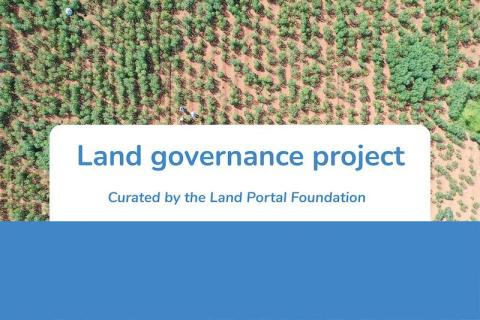Our Vision
Our vision is a just world without poverty. We want a world where people are valued and treated equally, enjoy their rights as full citizens, and can influence decisions affecting their lives.
Our Purpose
Our purpose is to help create lasting solutions to the injustice of poverty. We are part of a global movement for change, empowering people to create a future that is secure, just, and free from poverty.
Achieving our Purpose
We use a combination of rights-based sustainable development programs, public education, campaigns, advocacy, and humanitarian assistance in disasters and conflicts.
We challenge the structural causes of the injustice of poverty, and work with allies and partners locally and globally.
Resources
Displaying 126 - 128 of 128Escaping the pastoralist paradox in the face of climate change: A comparative analysis of different tenure sys
General
Pastoralists across East Africa are challenged by loss of land, political conflicts, population increase, economic inequality, and climate change. A transition from pastoralism to agro-pastoralism has been observed in semi-arid areas in response to these challenges. The hypothesis for this project is that the resilience of this transition rests on the capacity to provide secure but still flexible access to land, the so called paradox of pastoralist land tenure.The purpose of this project is to conduct a comparative study of land tenure and capacity for climate adaption in four semi-arid, pastoralist regions in Kenya. The aim is to provide new insights on how pastoralist land tenure can be designed to enable effective adaptation strategies. The four Kenyan case study counties are all dominated by semi-arid land.We identify and categorize land tenure systems and associated practices within these four areas, and map the way land tenure is practiced in these counties through samples of communities in each county. This will enable an evaluation of the marginal valuation of changes in attributes central to household welfare and collective action. The project will use a combination of ecological methods to measure rangeland productivity, combined with interview data on household livestock and milk production, animal breeds and health.We will then synthesize these results to identify pathways towards resilient pastoralist land tenure systems and propose alternative tenure designs.
How tree cover affects groundwater resources across African tropical drylands
General
An estimated 80% of the global population lack secure water resources. Many also lack ready access to fuel wood and other tree derived benefits. However, the current scientific paradigm says that we must choose which problem to solve as increasing tree cover always reduces water availability. Consider the costs if this thinking is wrong. In Africa, 175 M ha of degraded lands are judged suitable for tree planting which could significantly enhance people’s livelihoods. Our previous research in the seasonally dry tropics indicates that an intermediate tree cover can often improve groundwater recharge. This need testing on a larger scale, but if confirmed will upend the prevailing view in hydrology and have profound implications for policies affecting millions of livelihoods and the environment. Thus, the aim of this project is to provide evidence for better policies and management that will benefit poor people in drylands by evaluating the novel “optimum tree cover theory” for groundwater recharge across African drylands. The project involves four leading institutions; SLU, ICRAF, WU and NMBU. We will use the Land Degradation Surveillance Framework; a unique dataset that is available across Africa. It consists of multiple variables, including tree cover and key soil variables. We will do complementary strategic measurements of soil water flow and tree water use to model groundwater recharge as a function of tree cover under common conditions of the seasonally dry tropics.
How tree cover affects groundwater resources across African tropical drylands
General
An estimated 80% of the global population lack secure water resources. Many also lack ready access to fuel wood and other tree derived benefits. However, the current scientific paradigm says that we must choose which problem to solve as increasing tree cover always reduces water availability. Consider the costs if this thinking is wrong. In Africa, 175 M ha of degraded lands are judged suitable for tree planting which could significantly enhance people’s livelihoods. Our previous research in the seasonally dry tropics indicates that an intermediate tree cover can often improve groundwater recharge. This need testing on a larger scale, but if confirmed will upend the prevailing view in hydrology and have profound implications for policies affecting millions of livelihoods and the environment. Thus, the aim of this project is to provide evidence for better policies and management that will benefit poor people in drylands by evaluating the novel “optimum tree cover theory” for groundwater recharge across African drylands. The project involves four leading institutions; SLU, ICRAF, WU and NMBU. We will use the Land Degradation Surveillance Framework; a unique dataset that is available across Africa. It consists of multiple variables, including tree cover and key soil variables. We will do complementary strategic measurements of soil water flow and tree water use to model groundwater recharge as a function of tree cover under common conditions of the seasonally dry tropics.



